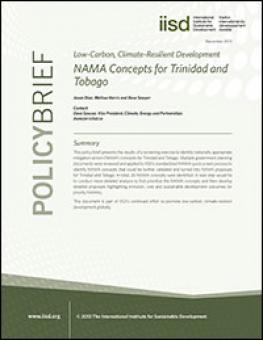
NAMA Concepts for Trinidad and Tobago
This policy brief presents the results of a screening exercise to identify NAMA concepts for Trinidad and Tobago.
The goal of this high-level country analysis is to identify NAMA concepts that align with Trinidad and Tobago's development aspirations, conform to pre-existing policy frameworks,and have associated sustainable development co-benefits. Multiple government planning documents were reviewed and applied to a standardized NAMA quick screen process to identify NAMA concepts that could be further validated and turned into NAMA proposals for Trinidad and Tobago. In total, 26 NAMA concepts were identified, which could be taken forward by Trinidad and Tobago for further consideration.This document is part of IISD's continued effort to promote low-carbon, climate-resilient development globally.
You might also be interested in
IISD: EU’s historic Energy Charter Treaty vote will boost energy transition
The European Parliament has voted for the European Union to withdraw from the climate-threatening Energy Charter Treaty.
G20 Finance Ministerials and World Bank/IMF Spring Meetings: Expert comment
G20 finance ministerials and World Bank/IMF spring meetings will take place this week in Washington. High on the agenda is the need to mobilize trillions of dollars of investment in the transition to clean energy.
IISD Applauds Canada’s Reaffirmation to End Domestic Public Finance for Fossil Fuels in Budget 2024
Today's federal budget announcement delivers new measures to support affordability and reaffirms Canada’s commitments on climate action.
Experts Call on G7 to Get Serious on Fossil Fuel Subsidy Reform
At this month’s G7 meetings, ministers need to close the loopholes and show they are serious about tackling fossil fuel subsidies.